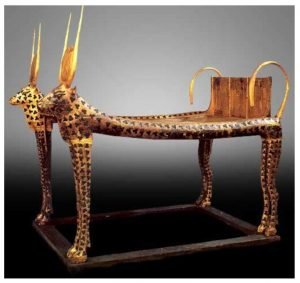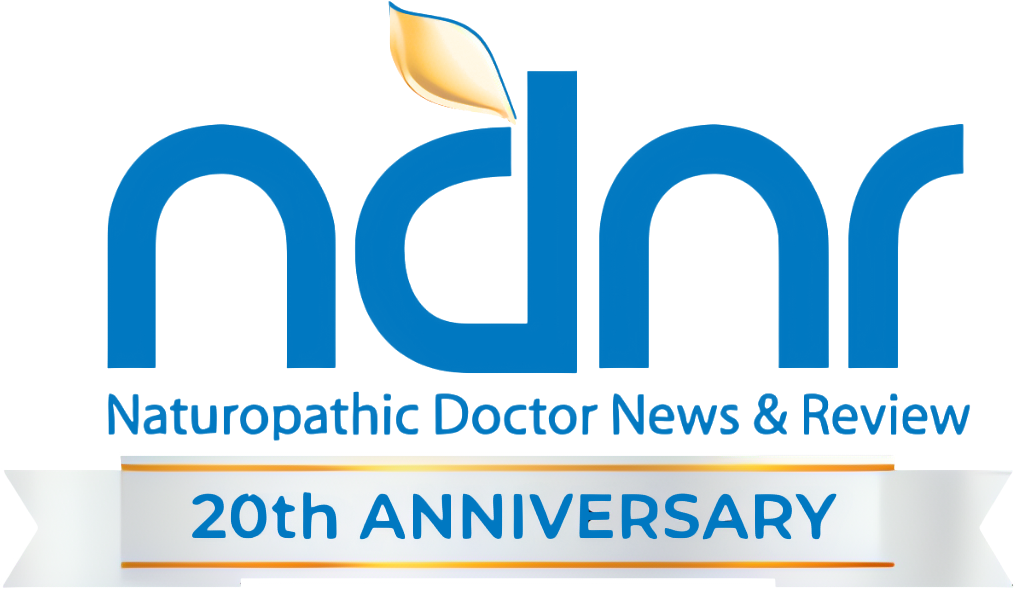Cory Ostroot, ND
Vis Medicatrix Naturae
When I was a child, my family time was split at Christmas between my mother’s and father’s sides of the family. I was either spending time on my father’s side, in a mansion in Minneapolis with multiple Christmas trees and more food than I could put in my belly (including lutefisk, yuck!) or, I was spending Christmas on my mother’s side, 20 miles from the border of Canada in a small farm town that FedEx has trouble delivering to. Some people call it the end of the world or Nowheresville, but I call it home.
Since the first Christmas that I can remember in Nowheresville, a very strange occurrence would happen: I would be in the living room by the Christmas tree, playing with my toys, or better yet, annoying my girl cousins. All of a sudden, we would be ushered into the kitchen. I remember asking my mother, “Mommy, why can’t I go be by the Christmas tree?” My mother would say, “Everything is okay, Honey. Grandpa needs some space right now.” Then I recall big men in red coats and pants walking through the front door, almost hitting their heads on the archway. They had blank stares and icicles running out of their hairy noses. I asked my mother, “Who are those men?” She would reply, “They are here to help your grandfather.”
Shortly thereafter, my attention would be drawn to the shortbread cookies, mints, and other delectable bites in the kitchen that my aunt and mother had made for me. And with each mouthful, the event would slowly melt away like the next cookie in my mouth. This event with my grandfather repeated itself many more times over the course of my childhood, and I became increasingly desensitized to it. What I didn’t realize until I went to medical school was that my grandfather was very sick from a young age. My mother and grandfather used words to describe just how he was sick – heart attacks, heart failure, triple bypass, nitroglycerin, statins – but these strange occurrences continued. Why wasn’t Grandpa getting better? With each year I had more questions, but received no better explanations than drugs or the next surgery.
Learning About the Heart
In my first year of medical school we received 8 weeks of training on the heart. The analogy offered by the professor was the heart as a mechanical pump that pushes blood through the body; there were chambers, valves, and an electrical system all working together to pump oxygen-filled blood to the body’s tissues. We learned that the heart is the most complex muscle in the body because it has the ability to beat even when the brain and central nervous system have been completely shut down. I was really intrigued but not given any tools with which to change a sick heart into a healthy heart.
In my second year of medical school, we learned about the drugs that can affect the heart, from medications that slow the heartbeat – called beta-blockers – to medications that reduce the amount of fluid the heart has to pump – called diuretics. Then there were surgeries that could repair blockages caused by cholesterol and other fatty deposits; the arteries could have a stent inserted, or an artery could be removed and replaced by a vein in the leg. All of these strong therapies, drugs, and surgeries seemed like amazing options and great ways to fix the problem. But why didn’t they help my Grandpa?
Then came my third year, when I finally got to learn how to help people naturally! I was introduced to supplements like coenzyme Q10 – a super-antioxidant – and a supplement containing natural nitric oxide inducers, thereby helping to decrease inflammation in the vessels and dilate them to increase blood flow. These were all decent options, I thought, but what was the real reason that my grandfather kept having heart attacks? I needed to go back to my first year of schooling to better understand the physiology of the heart and the importance of blood flow. That’s when I heard about Andrew Fletcher.
Andrew Fletcher’s Inclined Beds
Andrew Fletcher is an engineer who discovered a very important concept, which is that the human body works exactly like trees in terms of how they move fluid throughout their system. Based on his concept, Fletcher developed a therapy of inclining beds to improve cardiovascular circulation.1-4
The theory of capillary action is one way of explaining how fluid gets from the roots of a tree to its leaves. In trees, small tubes like straws (capillaries) propel fluid all the way to the leaves; the fluid flows against gravity because of its adhesion to the sides of the tubes. This theory has only been proven in experiments that moved fluid 10 meters against gravity. How is it that large trees, like the Giant California Sequoia, are able to move fluid 100 meters against gravity? In about 15 minutes, Fletcher had solved the problem: The density of the fluid had to continuously change through the tree, which was a closed-loop system. Fletcher demonstrated this theory on a mattress, adding fluid with salts and dye to a clear plastic tube and closing the tube to make a circle. He laid the tube on a bed and slowly increased the angle of the bed, in effect causing more and more gravity to act on the closed tube, until he reached a threshold of 6 inches at the head of the bed. At this point the fluid began to move from the top to the bottom of the loop in 1 motion. The less dense material would rise, and then the more dense material would fall.
Now, how does this occur in human beings? Our hearts pump blood with salts to our lungs. Our lungs expire, causing moisture to be released, creating denser fluid, which, in effect, helps the fluid descend to the kidneys. The kidneys filter the blood and remove solutes, which causes the blood to because less dense and rise back to the heart to be pumped again.
The only factor that I haven’t mentioned, though it should be implied, is that gravity must be constantly acting on these fluids in order for the denser fluid to fall and the less-dense fluid to rise. This natural movement of fluid is called “molecular drag.” In a closed-loop system, molecules in motion will pull the molecules behind it, effectively pulling fluid, similar to a roller-coaster car attached to and pulling the car behind it. This natural action reduces stress on the heart, lowering blood pressure, and relieving edema associated with congestive heart failure, perfusion to the brain, varicose veins, and other conditions that involve pressure.5 Now, a backwards concept to consider is the standard approach to patients in hospitals of elevating a body part that has undergone damage, inflammation, or pain. The fluid from that body part is drained, thus providing transitory relief, but then it’s difficult for new blood flow to perfuse back to the site of injury for healing. We are causing long-term blood stasis, as well as preventing an injury from healing.
The Costs of Sleeping Flat
My grandfather had numerous heart conditions, but it all started with high blood pressure, one of the most common heart-related conditions. In the conventional medical community, this is treated by suppressing the blood pressure with drugs. This patch may be necessary for survival but does not get at the underlying cause. Consider the fact that we spend about one-third of our lives in sleep. If we are sleeping flat, we are compromising our health by preventing molecular drag from occurring, and we’re putting extra stress on our hearts.
If almost all sleep studies, including those by NASA, find sleeping flat to be detrimental to one’s health, why is our culture continuing to sleep on a flat mattress? People are being paid $18 000.00 to lay in bed for 3 months straight to test the deleterious effects this has on human health.6,7 Most of these patients – who began the study healthy – cannot complete the study because of medical complications. Andrew Fletcher found this research about the negative impact of sleeping on a flat bed and went back into history to explore how people had slept. The best example of this can be found in King Tutankhamun’s ancient bed (Figure 1). The head of the bed had been inclined around 5 inches to achieve the desired 5 degrees of incline that Fletcher had observed in his experiment. Many more ancient Egyptian and European cultures also slept in beds with an incline.

Essentially, flat beds are slowing our circulation at night, causing a whole host of health-related concerns.8 Inclined bed therapy has been applied in hospitals across Europe, with dramatic effects even outside of the cardiovascular system. In order for us to start finding solutions to some of the most common chronic diseases in America, I will defer to my elder, Dr Jerry Tennant, who said, “If I can make one cell healthy, I can make my body healthy.”9 This concept is also true when you have poor circulation or an increased blood pressure that is placing stress on your cardiovascular system and which, after a period of time, can cause damage. Do I believe that inclined bed therapy is a panacea? Absolutely not; however, this is a gentle therapy that can be implemented into any treatment plan, with wonderful effects on the body’s ability to circulate blood.
My Own Experience
After being inspired by Mr Fletcher, I inclined my own bed about 1 year ago, and attempted to document the changes that I experienced in my body. Like almost every naturopathic doctor I know, I was a little overzealous and inclined my queen-sized bed to 7.5… well, closer to 8 inches. I recommend starting at less than 4 inches and slowly increasing the incline as you see fit, to achieve the 5-degree tilt. My first night was like being on a “slip and slide” in the middle of the summer, except that there wasn’t a smile on my face the next morning. I ended up with some neck pain, as well as a kink in my lower back, which already has disc herniations. Once I lowered the tilt of my bed to the recommended 6 inches, I experienced headaches and increased muscle soreness for 10 days, which then subsided. My benefits afterwards included decreased muscle soreness and pain (including my back), increased alertness on waking, and a notable decrease in awakenings in the middle of the night. I also experienced a consistent need to urinate a large amount in the morning, which suggested that my kidneys were filtering much more during the night. I have also noticed that sleeping on a flat bed is very uncomfortable now; I wake up feeling almost ill after a few days of this. I am never going back to sleeping on a flat mattress.
I might not have been able to change my grandfather’s heart from a sick heart into a healthy heart, but now I know there are natural ways in which we can benefit the heart and take stress off of it so that it can work longer and better. One of those ways is by inclining one’s bed.
References:
- Fletcher AK. Tilt Your Bed To Improve Health & Fitness Inclined Bed Therapy Testimonials Awake Radio DIY. [YouTube video] Available at: https://www.youtube.com/watch?time_continue=72&v=6H7gSolYBc0. Accessed July 9, 2017.
- Hawke J. Inclined Bed Therapy: A New Angle on Health. March, 2016. NEXUS Magazine. Available at: http://inclinedbedtherapy.com/interviews/news-articles. Accessed July 10, 2017.
- Fletcher AK. Part 1 of 2 Experiment Apparatus to show stenosis in soft walled tubing. March 22, 2010. [YouTube video] Available at: https://www.youtube.com/watch?v=5fPLE3xhjGs. Accessed July 9, 2017.
- Fletcher AK. Stenosis CCSVI Experimental model shows blood density / postural origin. Part 2. March 22, 2010. Available at: https://www.youtube.com/watch?v=zNJHChtHklg. Accessed July 9, 2017.
- Klabunde RE. Cardiovascular Physiological Concepts. Laminar Flow. Revised June 1, 2011. Available at: http://www.cvphysiology.com/Hemodynamics/H006. Accessed July 10, 2017.
- IwanickI A. NASA is Paying Me $18,000 to Lie in bed for Three Months. November 3, 2014. Available at: https://www.vice.com/en_us/article/av4a4a/nasa-patient-8179-100. Accessed July 10, 2017.
- Willsher K. Wanted: space volunteers willing to lie in bed for two months – for €16,000. April 4, 2017. The Guardian Web site. https://www.theguardian.com/world/2017/apr/04/wanted-space-volunteers-lie-bed-two-months. Accessed July 10, 2017.
- Singer SR. Heads Up! The Way you are Sleeping May be Killing You. May 26, 2011. The Hawaii Reporter. Available at: http://www.hawaiireporter.com/heads-up-the-way-you-are-sleeping-may-be-killing-you/123. Accessed July 11, 2017.
- Tennant JL. Healing is Voltage: The Handbook, 3rd Edition. San Bernardino, CA: CreateSpace Independent Publishing; 2010.
Image Copyright: <a href=’https://www.123rf.com/profile_fxquadro’>fxquadro / 123RF Stock Photo</a>
 Cory Ostroot, ND’s passion for medicine began when his mother became ill in her late 20s. She had body-wide pain, brain fog, and mood swings, but eventually recovered with the help of a naturopathic physician. At that time, Dr Ostroot developed similar symptoms. Most doctors attributed his pain to a history of high-level sports and overactivity, and they recommended treatments that only worsened the pain. An ND finally diagnosed him with an autoimmune condition. After months of treatment, his depression lifted and his pain was greatly reduced. Dr Ostroot’s passion is to help return people to the life they were meant to live, while being a conduit for health and wellness.
Cory Ostroot, ND’s passion for medicine began when his mother became ill in her late 20s. She had body-wide pain, brain fog, and mood swings, but eventually recovered with the help of a naturopathic physician. At that time, Dr Ostroot developed similar symptoms. Most doctors attributed his pain to a history of high-level sports and overactivity, and they recommended treatments that only worsened the pain. An ND finally diagnosed him with an autoimmune condition. After months of treatment, his depression lifted and his pain was greatly reduced. Dr Ostroot’s passion is to help return people to the life they were meant to live, while being a conduit for health and wellness.


